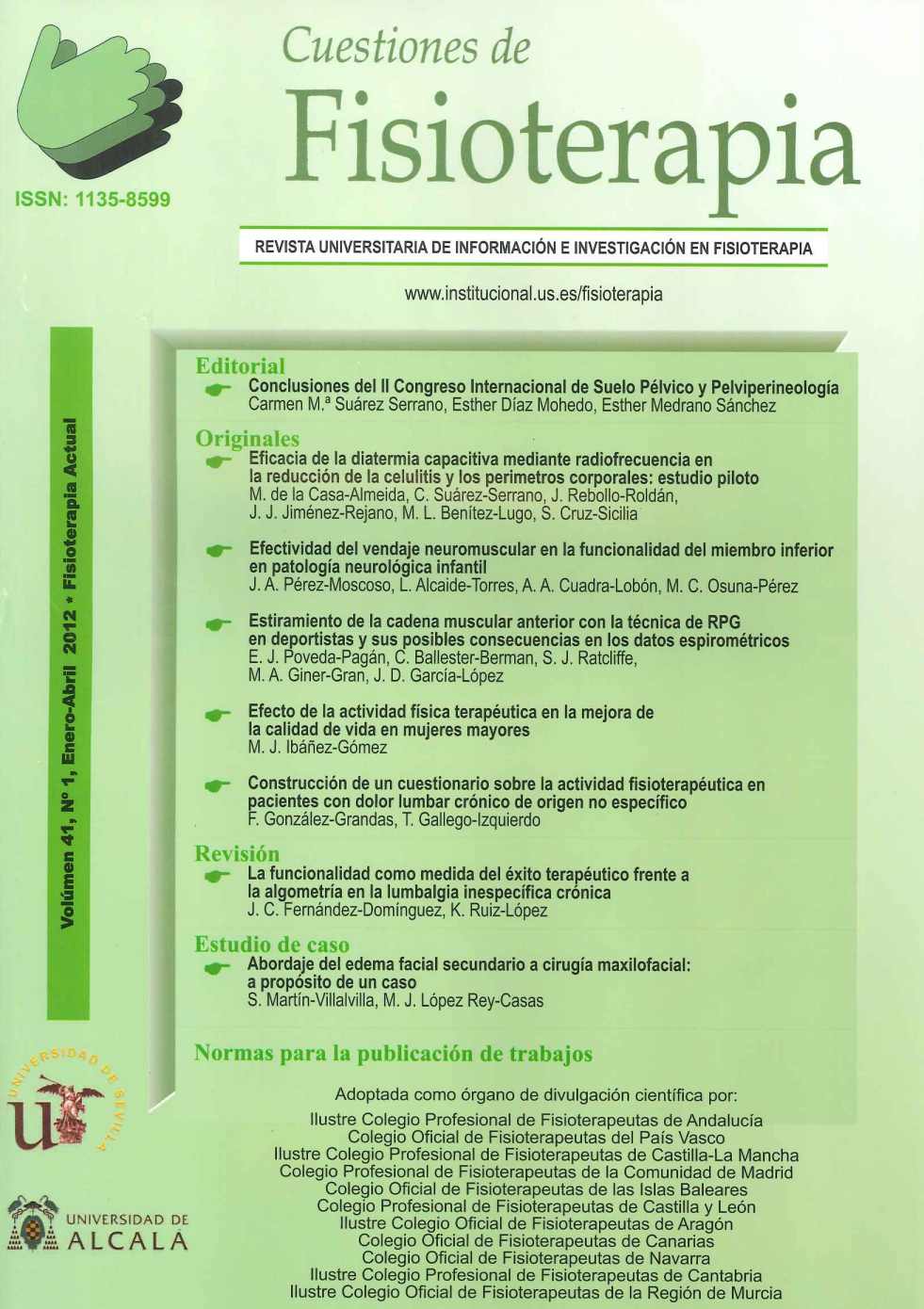Articles
Year 2012, Volume 41, Issue 2
Analysis of perineal massage and other physical measures respect to perineal tears and episiotomy during delivery
Abstract
Objective: to review the state of the art of the different preventive measures applied during pregnancy to decrease episiotomy incidence, because nowadays restrictive using is advocated, and to reduce spontaneous perineal tears during delivery. Method: systematic review in PUBMED, COCHRANE, PEDRO, CINAHL and CUIDEN databases, using as a keywords: perineal massage, epi-no, maternal education, antenatal education, prenatal education, and pelvic floor exercises. All of them were combined «by and as» a boolean operator, with the keywords: episiotomy, childbirth, pregnancy and delivery. 35 articles of the last 12 years papers related to these matters have been selected, placing in front metaanalysis, systematic reviews and randomised clinical trials. Results: our resultsshow that perineal massage seems to be a protective factor of perineal obstetric trauma (mostly episiotomy) in nulliparae women older tan 30 years, and it diminishes postpartum perineal pain in multiparae women. Little conclusive and even contradictory results: epi-no, pelvic floor muscles exercise, non-pharmacological techniques to reduce the use of epidural anesthesia and therefore the incidence of vaginal instrumental labours. It must be outlined that vertical positions and lateral decubitus during expulsive phase of delivery seem to be associated to diminished perineal damage. Conclusion: all of this shows the need of deep research into these matters.
Keywords: massage, episiotomy, physical therapy, primary prevention.

